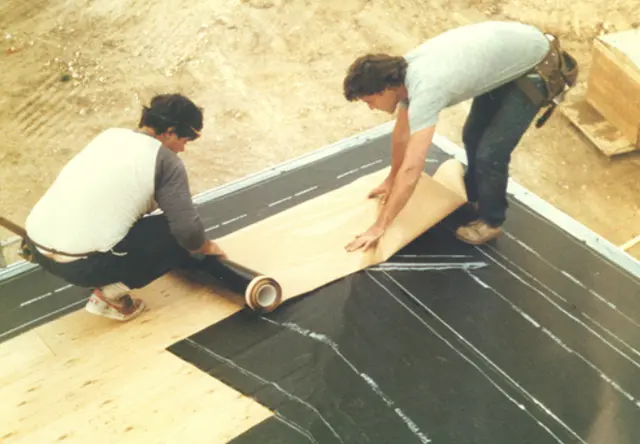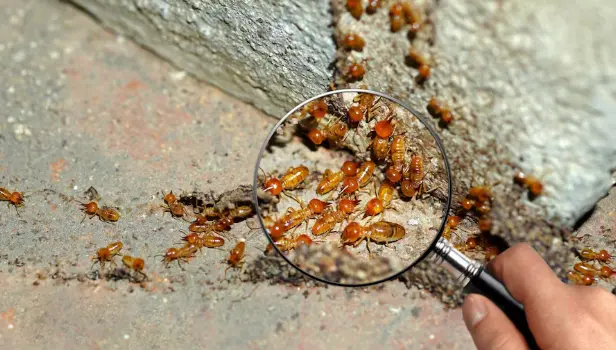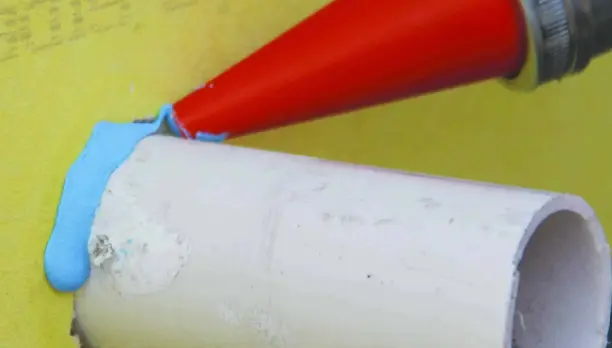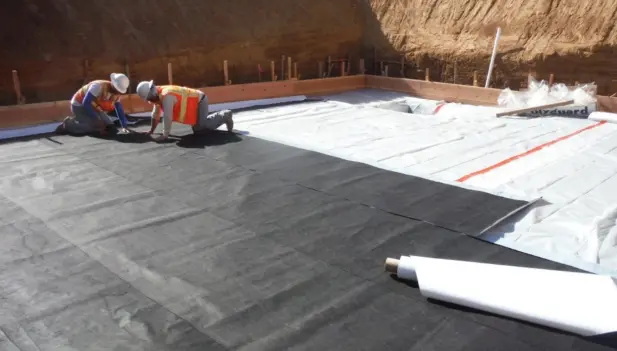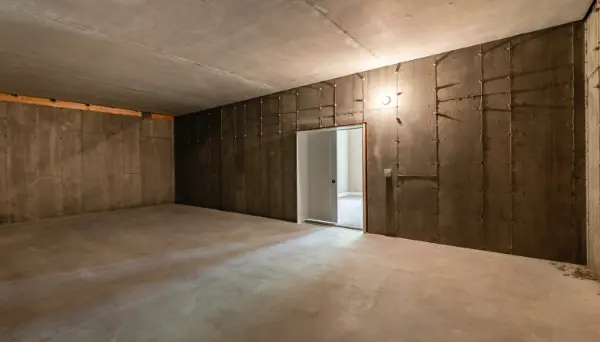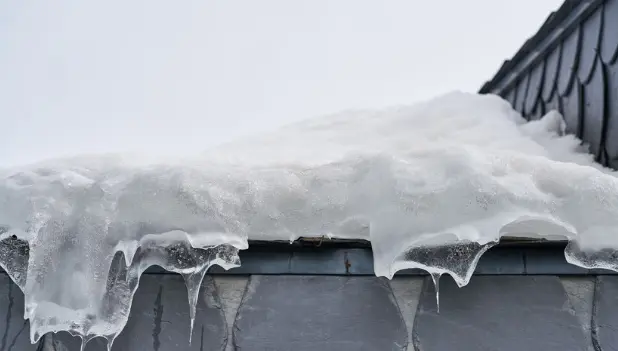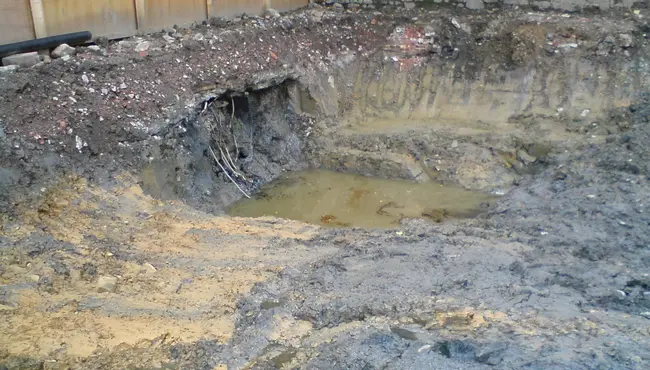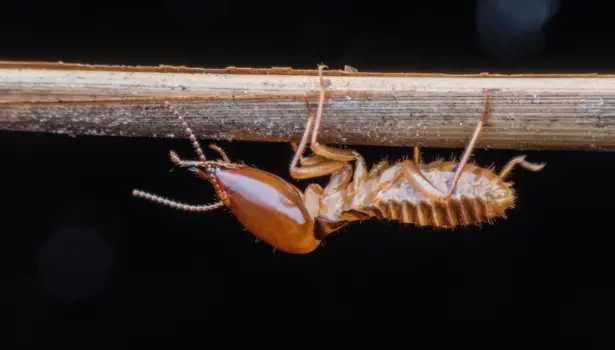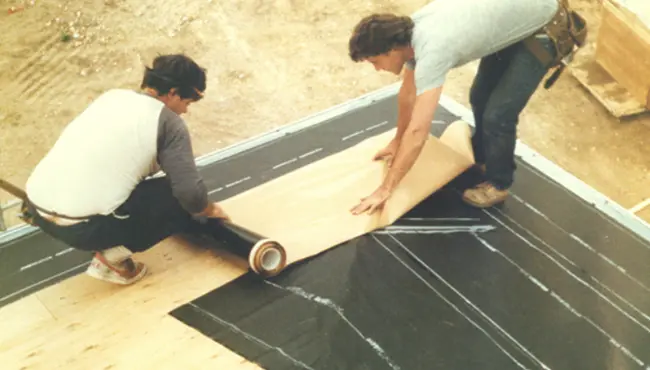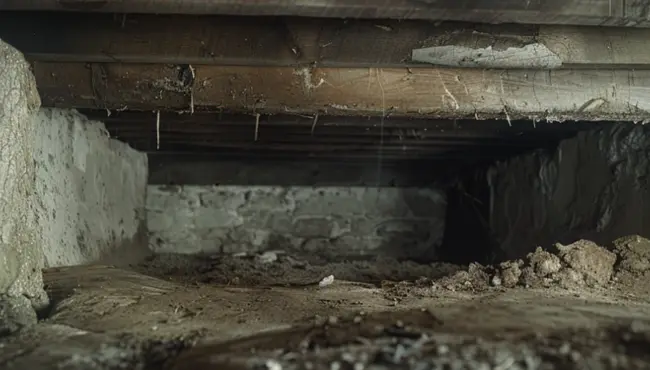
Basement moisture issues often start with the ground below the concrete slab. Moisture and water vapor from the soil can travel upward, seeping through the slab into the basement. This intrusion can cause mold growth, structural damage, and damage to flooring materials.
Installing a proper moisture barrier for basement floor construction is a preventative step to protect the space and maintain a dry, safe environment.
How Moisture Travels Through the Slab
Concrete, while strong, is inherently porous. Without a moisture barrier for basement floors, water vapor from the ground can migrate through the slab. This process, known as capillary action, allows moisture to rise and accumulate in the basement, leading to a range of problems:
- Mold and Mildew Growth: Elevated moisture levels create favorable conditions for mold and mildew to develop, which can compromise air quality and pose health concerns.
- Concrete Degradation: Over time, moisture can weaken the slab, causing cracks and reducing the overall stability of the foundation.
- Flooring Material Damage: Moisture that penetrates the slab can warp wood flooring, discolor vinyl, or cause carpeting to deteriorate.
- Radon Gas Intrusion: In addition to moisture, radon gas—a naturally occurring hazardous substance—can seep through the slab into the home. A moisture barrier also acts as a radon barrier, protecting the health and safety of the occupants.
An effective moisture barrier for basement floors prevents these issues by blocking water vapor and harmful gases at their source.
Types of Moisture Barriers for Basement Floors
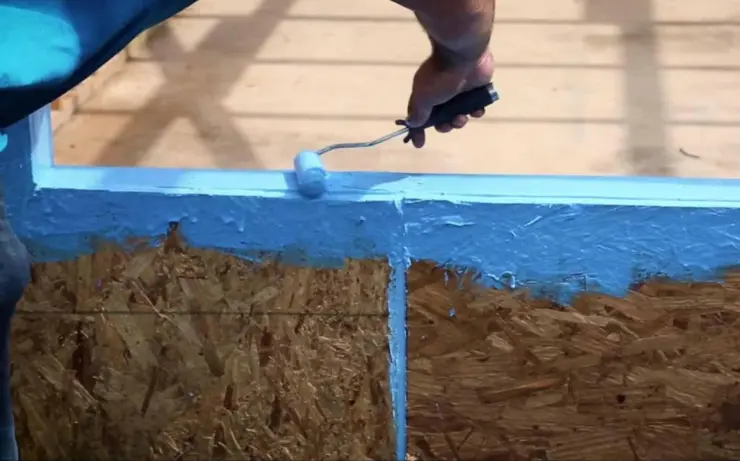
Understanding the various types of below-slab barriers available helps in selecting the most effective solution for a specific project.
Polyethylene Vapor Barriers
Polyethylene sheets are widely regarded as a reliable and cost-effective option for basement floor moisture barriers. These high-density plastic membranes create a physical barrier that prevents water vapor from penetrating the slab.
- Thickness Standards: Recent guidelines recommend a minimum thickness of 10 mils for below-slab vapor barriers. Thicker sheets provide better puncture resistance and durability, ensuring long-term effectiveness.
- Installation Method: Sheets are laid directly on the prepared subgrade with overlapping seams, which are sealed using waterproof tape to maintain a continuous barrier.
Fluid-Applied Membranes
Fluid-applied barriers are liquid coatings that cure to form a seamless, impermeable layer. They are especially useful for complex layouts or irregularly shaped subgrades.
- Advantages: Their ability to conform to uneven surfaces ensures full coverage and minimizes the risk of gaps or breaches.
- Application Process: Rolled or sprayed onto the subgrade, these membranes dry to create a highly durable barrier.
Polyguard Below-Slab Products
Polyguard offers advanced solutions specifically designed to provide superior protection in below-slab applications, including the best basement wall sealers to waterproof your foundation. These products combine ease of use with reliable performance, and they can complement other interior basement waterproofing methods for comprehensive moisture protection.:
- Polyguard Underslab Membrane: A robust sheet barrier designed to resist punctures and block water vapor effectively, ideal for areas with high moisture levels.
- Polyguard 650 Sheet Membrane: Engineered for below-grade applications, this product integrates seamlessly with other waterproofing systems for comprehensive protection.
Understanding the different types of moisture barriers is essential, but appreciating their overall impact on basement protection truly underscores their value.
The Critical Role of Moisture Barriers in Basement Protection
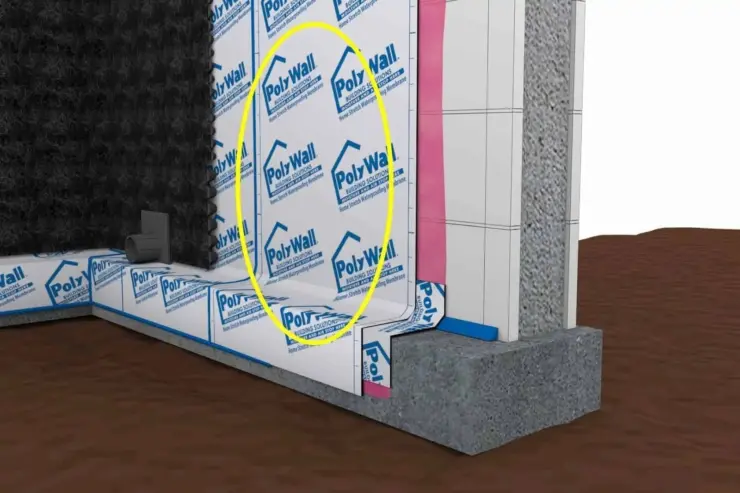
Installing a moisture barrier provides multiple benefits that go beyond protecting the slab itself:
- Preserving Structural Integrity: Prevents water infiltration that could weaken the slab, reducing the risk of cracks and compromising the foundation.
- Improving Indoor Air Quality: Reduces moisture levels, which inhibits mold and mildew growth, creating a healthier living environment.
- Extending Flooring Longevity: Protects against moisture damage that can warp or degrade finished flooring materials such as wood, vinyl, or carpet.
- Reducing Radon Exposure: Acts as an additional barrier to radon gas, enhancing the safety of the home. Beyond moisture barriers, a comprehensive waterproofing system not only protects your home’s structural integrity but also improves air quality and increases its overall value, making it a worthwhile investment for long-term peace of mind.
While selecting the right moisture barrier is crucial, proper installation ensures it performs effectively and delivers long-term protection.
Installation Best Practices for Vapor Barriers
Proper installation is critical to the performance of a moisture barrier. Follow these steps for successful application:
Surface Preparation
- Excavate and grade the subgrade to create a stable, compacted surface.
- Remove all debris, sharp objects, or loose materials that could puncture the barrier.
- Use soil moisture testing tools to determine the most suitable barrier type.
Barrier Placement
- Polyethylene Sheets: Lay the sheets flat on the prepared subgrade, ensuring an overlap of at least 6 to 12 inches between seams. Seal seams and edges with waterproof tape to create a continuous barrier.
- Fluid-Applied Membranes: Apply the liquid coating evenly with a roller or sprayer. Ensure proper curing times as specified in the product guidelines.
- Polyguard Products: Follow Polyguard’s installation instructions for their Underslab and 650 Membranes to achieve optimal results.
Final Steps
- Inspect the installed barrier to confirm complete coverage and address any gaps, wrinkles, or punctures.
- Integrate the floor barrier with wall waterproofing systems for a seamless defense against moisture.
- Proceed with the concrete pour, taking care not to disturb or damage the barrier during this phase.
While proper installation is critical, avoiding common mistakes ensures long-term performance.
Avoid These Common Moisture Barrier Mistakes
Avoiding errors during installation ensures the barrier performs as intended. Key mistakes to steer clear of include:
- Using Incorrect Materials: Barriers that are too thin or not rated for below-slab use may fail under stress or moisture pressure.
- Skipping Seam Sealing: Failing to properly seal seams and edges allows moisture and radon to bypass the barrier.
- Insufficient Surface Preparation: An uneven or unclean subgrade increases the risk of punctures and compromises the barrier’s effectiveness.
- Rushing Installation: Ignoring manufacturer guidelines or skipping steps leads to poor performance and potential failures.
Partner with Polyguard for Comprehensive Basement Protection
A moisture barrier for basement floors is a foundational element in protecting your basement from water vapor and harmful gases like radon. Polyguard’s advanced solutions, including their Underslab and 650 Sheet Membranes, provide industry-leading performance tailored to meet the demands of modern construction projects.
Contact us today for more information.
